Digital transformation has been happening in the private sector for many years, with industries like retail, hospitality, and even healthcare using modern technology to improve processes and performance. In fact, 91 percent of businesses are engaged in some type of digital initiative.
While private companies have begun to reap the benefits of their digital transformations, government entities — local and federal — are increasingly starting to test the waters. Many public sector leaders realize that applying the latest technologies to their organization can improve the citizen experience and enhance governance.
As in the private sector, these improvements happen largely due to overhauling outdated processes.
Government entities that continue to exclusively use manual processes to get work done face many challenges, such as higher operational and labor costs, which put them at a disadvantage. Not only does this way of working make administrative tasks time-consuming and expensive, but it also hinders decision-making and communication.
Government digital transformation involves using modern technologies — such as artificial intelligence, the Internet of Things, and cloud services — to streamline processes and automate workflows.
When comparing traditional government vs digital government, there are fundamental differences in how government employees serve their constituents. With a successful digital transformation, governments can provide their citizens with faster, more efficient, and more transparent services.
If you’re part of a government organization that’s exploring how technology can help you become more effective and efficient, you’re in the right place. In this informative guide, we’ll walk you through the many benefits of digitizing the public sector and discuss the challenges associated with digital government.
Plus, we’ll show you the many ways the right technology can enhance this transformation for all levels of government.
Pro Tip
Simplify your processes with Jotform Government. Learn more about our efficient and secure solutions now.
Chapter synopsis
- Introduction.
- Benefits of government digital transformation. Why should government agencies adopt digital solutions? There are many advantages, including increased public engagement and more transparency.
- Challenges with digital government transformation. Going digital isn’t easy — it takes time, effort, and funding. This chapter covers the potential obstacles the public sector faces when embarking on a digital transformation.
- How to start a digital transformation in your government agency. With so much to do, where do you start? This chapter teaches you the priorities government offices should focus on when starting their digital transformation, such as automating workflows and making services more convenient.
- Establishing a mobile government. Here, we look at how a mobile government affects citizens and employees, and share best practices for creating mobile-optimized government solutions.
- Local governments and digital transformation. Local government offices are typically smaller than their state and federal counterparts, which can present some unique challenges. We share an inspirational success story of a local government digital transformation.
- How Jotform Enterprise can help governments achieve digital transformation. When it comes to digital transformation solutions for the public sector, Jotform Enterprise is the go-to choice. This chapter covers the features and benefits of this solution.
Let’s dive in.
The benefits of digital government transformation
Most government organizations continuously strive to better serve their constituents. Going digital can help, whether by reducing costs, providing faster service, effectively using data, or otherwise. Below are just a few advantages governments can expect to gain by moving from manual to digital work.
Increased operational efficiency
Any digital government transformation, regardless of what type of technology it involves, will require a sizable financial investment. However, digital services and automation technologies improve the speed and efficiency of employees, reducing operational costs over the long term.
For example, many government processes, such as permit applications, require forms and signatures. Manually filling out forms and mailing them in is a slow process; the same is true for manually collecting signatures. These old-school processes often lead to lost paperwork and confusion.
Digital forms and electronic signature software can alleviate much of the back-and-forth process, shortening the timeline and reducing the effort involved considerably, increasing organizational efficiency.
“[Digital transformation] can automate mundane, repetitive tasks, leading to significant boosts in efficiency and productivity,” says Justin Insalaco, retired police officer and a strategic adviser to Atlas One, which offers public safety digital communications.
“Although we highlight these aspects as critical ROI markers, there are additional, equally valuable benefits. By automating routine tasks, government agencies can dedicate more time and resources to crucial functions, leading to overall improved service delivery and enhanced community experience.”
Quick feedback implementation
Citizens need to feel heard, and the best way for a government to provide that experience is to collect feedback and act quickly in response.
Digital tools like online surveys and forms can simplify and speed up the feedback collection process. And data visualization software can uncover actionable insights from public comments, allowing governments to address feedback quickly.
Increased public engagement
The world outside a government office is digital. People order everything from groceries to shoes online. They make their doctor’s appointments through an online portal and attend classes and meetings via video calls.
Government organizations can engage the public in their decision-making efforts by offering the same digital services they are accustomed to using elsewhere: online booking tools, ordering systems, payment systems, video calls, and more.
“Over recent years, especially in the wake of the global pandemic, a significant shift in community engagement has been reported by government executives,” notes Insalaco.
“There has been a notable decline in physical visits to government offices as citizens become increasingly accustomed to accessing services digitally, primarily through their smartphones. Digital transformation can effectively address this trend, enabling government agencies to engage a broader section of citizens and visitors than ever before. Beyond these operational benefits, digital transformation also aligns with the wider societal goals of sustainability and accessibility.”
Greater transparency into government processes
From the outside looking in, government processes can seem like a labyrinth of rules and regulations. This level of complexity tends to foster a sense of distrust in government. People want accountability from public sector leaders and government employees and a way to understand what government officials do daily.
Digital processes are much more transparent than manual ones because it’s easier to see the trail of action steps and workflows.
What does government transparency look like? If a citizen wanted to know the status of their permit application, a digital system would allow them to simply go online and look up the application number. In a manual world, finding the application buried in a sea of other papers on a government worker’s desk could be nearly impossible.
Higher levels of job satisfaction
A government digital transformation doesn’t just benefit citizens and public sector leaders. It also greatly affects the day-to-day work of the average government employee.
Repetitive processes and overly complex workflows hinder creativity and innovation, making employees lose passion for their work. Going digital alleviates the burden of such tasks. It gives employees time to focus on more important work, such as engaging directly with citizens or working on projects they are passionate about.
Data-driven decision-making
“Digital tools can facilitate data-driven policy decisions,” says Aja Brown, former mayor of Compton and senior director of impact and communications at FORWARD, a program administration platform for the public sector. This not only benefits government employees but also their constituents.
Instead of manually analyzing large amounts of data, public sector employees can use digital tools to spot trends and anomalies and predict outcomes. They can also use these tools to develop visual reports to better understand the data they use to make decisions.
While there are some key advantages of digital government transformation, the actual transformation process isn’t easy. It’s important to be prepared for some of the obstacles you’ll likely encounter.
Challenges with digital government transformation
In many cases, a government digital transformation can take months or even years to complete, depending on the type of technology your organization is using and the processes you’re digitizing. However, successful transformations require patience and the right strategy and technology.
In this chapter, we’ll discuss some of the main obstacles that could slow down your transformation and suggest solutions.
Organizational silos
One main government digital transformation challenge is that many agencies are structured as individual silos.
There is little to no communication or collaboration between departments because there is no system to facilitate information exchange. But once departments start working together, they can use one another’s data and insights, improving overall efficiency.
To promote collaboration, it’s important to choose digital solutions that support interdepartmental communication. Jotform Teams, a shared workspace, is an excellent solution to the government silo problem.
Using Jotform Teams, government agencies can get on the same page about processes, workflows, and programs. Teams enables government employees to share forms, documents, tables, and other data while the team admin can set specific controls and permissions for each piece. This way, the right people can access the documents they need and work together on government initiatives.
Because all form submission data automatically populates the associated table in Jotform, public sector employees can use Jotform Tables to organize the information they receive through their forms and track submissions.
When it’s time to turn that data into visually appealing reports, employees can use Jotform Report Builder, which presents actionable insights clearly.
Resistance to change
For many people, change doesn’t come easy. This is especially true in government settings with longtime employees and highly complex processes and procedures. Even something as simple as automating an approval process (rather than emailing someone to ask for approval) can feel like a difficult transition.
According to Brown, building consensus among stakeholders can be a major obstacle. How can government agencies avoid this challenge? It all starts with early education.
Government leaders need to show employees on each level the types of changes they are setting out to make and the advantages those changes will bring for employees. Workshops, product demos, and town hall meetings can all help reduce resistance to change, as can using the right digital tools.
For example, Jotform Workflows can streamline many government processes by automating approval flows. Not only can Jotform Workflows be used for individual approval processes, but the Group Approvals feature automates and tracks team decisions and automatically moves the process to the next step.
Lack of funding
Many government entities delay the process of digital transformation because of a lack of funds. They may need help to acquire the technology or expertise they need; they also might not be able to allocate the necessary time to the changeover, as a switch to digital sometimes requires training.
Funding issues also impact the types of solutions government agencies acquire. “We’ve seen a burst of new technologies and policy shifts trigger a proliferation of companies pitching their services to government organizations,” says Insalaco.
“And herein lies a unique challenge for the government sector. Substandard systems, which wouldn’t pass muster in the private arena, often find a safe harbor in government projects. The reason? Public agencies typically float a Request for Proposals, and, more often than not, it’s the cheapest solution that wins. While this might be celebrated as a taxpayer win, the practical fallout is anything but a victory.”
It’s vital for government organizations to carefully vet any solution they consider, regardless of price.
Jotform provides an enterprise solution that’s robust enough to support large government entities but flexible enough to be priced according to each agency’s needs.
This way, no government office needs to sacrifice digital solutions because of funding. Instead, your agency can work with Jotform to create a plan that supports your technology requirements and works within your budgetary constraints.
Digital skills gaps
Some employees have difficulty adjusting to new processes and workflows; others struggle with a lack of digital literacy. Where there is a digital skills gap, government employees require training. However, the training cannot interfere with daily operations, so finding a balance between learning new solutions and handling tasks is important.
Brown notes that, even after learning the new system and using it for a while, some employees may revert to their old ways — so be on the lookout for this. Government agencies can overcome these issues with continued employee training and the right digital transformation solutions.
Jotform Enterprise is a user-friendly digital government transformation solution that’s intuitive for employees. It requires minimal training, no matter the level of digital skill.
Jotform also comes with detailed User Guides, which government employees can use to find answers to frequently asked questions. The guides contain helpful articles with images and videos so employees can see step-by-step instructions.
Risk avoidance
Overhauling workplace systems and processes comes with inherent risk. Will the new technology work better than the old? Will everyone know how to use it? How long will it take to get a return on investment?
These are all legitimate questions. No one wants a digital transformation to fail, but sometimes the fear of failure is enough to prevent governments from moving forward.
While taking such a risk can be scary, especially for the public sector leaders responsible for making the decision, it’s also important to acknowledge the risk of not making the change.
What happens if yours is the only government office not taking steps to modernize your operations? How long will you be able to provide a level of service that continues to meet citizens’ needs? Will you be as efficient and effective as you can be?
Choosing the right solution can help reduce or eliminate the risk of an unsuccessful digital transformation. For example, Jotform Enterprise, which is used by many government organizations, is a tried and tested solution with many case studies that showcase its success in the public sector.
Security concerns
Government organizations at every level frequently handle confidential and sensitive data, including national security information and personally identifiable information.
When all this data is digitized, it needs to be protected from cyber threats. A digital transformation can expose highly sensitive information to hackers if you don’t use the right security protocols and software.
Jotform Enterprise is PCI DSS Service Provider Level 1 certified — the highest security attainment possible for processing payment transactions. Other security features include 256-bit SSL encryption and password protection. Plus, Jotform Enterprise is SOC 2- and GDPR-compliant. You can also opt for features that enable HIPAA compliance.
If you’re a public sector leader, you can rest assured that Jotform will keep your agency’s data in the right hands.
Now that we’ve gone over some of the challenges related to digital government transformation, it’s time to start the digitization process.
How to start a digital transformation in your government agency
With so many manual processes and workflows, figuring out how to begin a digital transformation can be overwhelming.
Insalaco has extensive experience in digital transformation, especially within the government sector, and has helped organizations of all stripes navigate the intricacies of tech adoption. “Let me assert up front,” he says, “there’s hardly an area of government that doesn’t necessitate digital transformation today or in the very near future.”
Digital transformation will look different for each government agency and entity, but there are certain areas where transformation programs will make the biggest impact. It’s up to government leaders to prioritize high-value processes and workflows that will affect the employee and citizen experience the most and enhance public services.
In this chapter, we highlight several areas that may be a starting point for digital government transformation and point out the corresponding digital transformation tools that enable the move to a digital environment.
Note that this isn’t an all-inclusive list, as priorities for different agencies may differ based on the services they offer or the processes they use.
Automate manual processes and workflows
The public sector is full of inefficient, time-consuming manual processes. For example, a permit or license request might involve many steps, such as downloading a form online or picking up a paper form at a government office. Constituents must then fill out the form, return it to the government office, and wait for their data to be manually processed and approved.
This can take weeks or longer depending on the number of personnel involved and the agency’s level of organization. Manual processes like this can easily be digitized to improve efficiency and quality of service.
Jotform Enterprise offers automated approval workflows that allow government agencies to speed up their services. With Jotform’s approval workflows, requests are automatically sent to the right people, as are reminders if requests aren’t handled promptly.
Government workflow automation ensures citizens receive expedient public services and supports employees in the public sector. They no longer worry about losing forms or forgetting to respond to specific requests, as they receive the right documents and reminders automatically.
Introduce online services
Many government organizations still require citizens to appear in person to request or receive a service or book appointments. However, this can be inconvenient, especially when it isn’t the norm in the private sector.
For example, people can easily shop, receive healthcare, and attend work or school online. Making government services accessible online would go a long way toward improving public perception of government.
“From tax/fee collection to license renewals, digital platforms can streamline services and expand accessibility,” says Brown.
Take something as simple as booking an appointment. In some government offices, citizens must call to schedule an appointment. Instead, you can simplify this process by offering an appointment-booking service online.
Jotform Enterprise provides government scheduling software that makes it easy for the public sector to offer online appointment bookings with automated reminders. Plus, governments can easily white label Jotform to ensure a seamless experience from their website to the booking solution.
In addition, Jotform Enterprise enables you to create custom URLs and use a custom domain so citizens don’t experience any disruption in accessing the services they need.
Jotform also offers ready-to-use templates for appointment bookings, registration forms, and employment forms, which governments can easily customize based on their needs using the drag-and-drop form builder.
Digitize your documents (and document management)
All too often, government paperwork is still actually on paper. Switching to digital documentation is easy and has a big impact.
Many government processes and services require forms to be completed. Instead of using paper forms, which can easily be lost or damaged, government agencies can switch to digital forms. The chances of losing or damaging a digital form are close to none.
Jotform offers hundreds of form templates for government document management, enabling you to move many of your agency’s document-heavy processes online.
In addition to digitizing documents, you can track the data your agency receives with Jotform Tables, which makes organizing and managing large amounts of data easy. Plus, government agencies can use electronic signatures for official documents and agreements.
Move records management online
A similar area that needs digital transformation is records management. While many confuse document management and records management, they are distinct.
By definition, document management involves the life cycle of a document from the time it’s created to the time it’s complete. Records management refers to managing documents that are already complete. It involves access controls, audit trails, disposition, retention rules, and more.
A permit that’s in the process of being obtained would be part of a document management workflow, but once the permit has been granted, it becomes a record to be managed.
Governments working to go paperless will need a digital records management solution. Electronic records management has many benefits, such as reduced costs, increased efficiency, better security, and increased transparency.
Jotform’s solutions make it easy to manage access controls and permissions on all documents to make them accessible to the right people. In addition, digital documents are easier to find than paper documents, enabling governments to be transparent in their recordkeeping.
Make employee services more convenient
Digital transformation benefits employees as much as it does citizens. Employees also conduct their fair share of business with the agency, such as booking paid time off, scheduling shifts, accessing human resources documents, and completing training.
Taking a manual approach to these internal interactions reduces the overall productivity of the agency and, thus, the employee. After all, it’s much more efficient to check a schedule on an app than walk to the break room to look at a schedule posted on a cork board.
Jotform offers many digital form templates for employees. From paid time-off request forms to accident report forms to screening checklists and employee satisfaction surveys, public sector leaders can move the employee experience online. This makes day-to-day tasks more efficient, increases convenience, and improves employee satisfaction.
Improve program administration
Governments can elevate their program administration efforts by going digital. Manual program administration requires considerable resources and doesn’t always produce the desired results.
“All aspects and stages of program administration can benefit from digital transformation, including using data-collection technologies to help city leaders make informed, data-based decisions around program design, using cybersecurity and fraud prevention tools to ensure data protection and program efficacy, and leveraging data modeling to inform target outreach efforts to ensure government programming is dispersed equitably,” says Adnan Mahmud, CEO of FORWARD. “Digital transformation also makes it easier for different stakeholders and community members to access information.”
Jotform supports governments with data collection through forms and data management with tables and reports. Taking it one step further, governments can use the Jotform App Builder to create custom apps for data collection and enable functionality to share data and findings with stakeholders for more effective program administration.
Another priority area for digital transformation is the move to mobile services. That’s a complex topic with unique considerations for citizens and employees — and an important set of best practices to follow.
Establishing a mobile government
It’s no secret that most people use mobile phones, a lot. In fact, 81.6 percent of Americans have a smartphone, and the average American spends five hours and 24 minutes on their smartphone every day.
Mobile phones have become an essential tool for interacting with businesses; it’s inevitable that the widespread preference for conducting mobile interactions will spill over into the public sector.
As a result, governments need to ensure their digital transformation includes a mobile component. This is another channel governments can use to offer their services to citizens and another tool employees can use in their daily processes. Mobile apps and mobile-friendly websites increase the likelihood that a government’s new digital strategy will be successful.
“Governments should adopt a mobile-first approach to digital transformation processes,” says Mahmud. “The majority of people, especially those in low-income communities, access data through a mobile device. To make government resources accessible, all information and systems must be optimized for mobile use.”
Mobile governments benefit two audiences: Citizens and employees
Mobile government initiatives should be two-pronged: one for citizens and one for employees.
Improving the citizen experience
From a citizen’s perspective, one of the key advantages a mobile government provides is convenience. People are already on their phones for hours a day. It makes life easier for them if they can access the government services they need via smartphones.
A mobile government also enhances accessibility. For example, some people may need help physically visiting a government office to acquire services. Others may not have access to a desktop computer with an internet connection.
With smartphones being so prevalent, people with different abilities and needs can access the services they need. Making services more accessible to the public helps build trust in government institutions, as people see the government making an effort to meet the diverse needs of its citizens.
Remember that data privacy and security are important to citizens. Accessing government services often involves inputting personally identifiable information, such as name, contact information, and social security numbers. It’s vital that citizens feel confident in the security of mobile government services and know their confidential data won’t be at risk.
Streamlining internal workflows
From an employee perspective, a mobile government offers productivity and user experience benefits.
For day-to-day tasks spanning departments and agencies, such as booking paid time off or checking a pay stub, governments can create mobile apps that make it easier and faster for employees to get the information they need.
Mobile apps and mobile-friendly websites typically have simplified user interfaces that are optimized and highly intuitive, so employees don’t have to spend time searching for things.
Remember to design your mobile solution so that it won’t add to employees’ workloads or create redundant tasks. For example, if an employee updates data through their mobile device, it should sync with the same system on their desktop so they don’t need to enter the same information twice.
Public sector leaders must consider ease of use, productivity, and efficiency when choosing platforms to create a mobile government.
“Many companies have indeed developed desktop portals for managing activities and administrative tasks on their platforms,” says Insalaco.
“However, given the sharp decrease in filled jobs in the public sector, it’s increasingly crucial that public servants can access these administrative functions from a mobile device. The silver lining here is that we’ve made significant strides in optimizing the mobile user experience. It’s high time government bodies harness these advancements to enhance their digital transformation strategies.”
Best practices for making government services mobile-friendly
Follow these best practices to develop your government’s mobile capabilities in a way that serves both audiences effectively:
- Take advantage of mobile technology. Not all digital transformation solutions will be useful in developing mobile services. The Jotform Enterprise Mobile app is an excellent solution for governments that want to collect data through smartphones. It allows individuals to complete many tasks on the go, such as filling out forms, e-signing documents, and approving requests.
- Create a seamless user experience. The user experience should feel fluid and natural even as someone switches between desktop, mobile, and in-person interactions. That’s why all Jotform solutions, including Jotform Apps, can be white labeled with custom colors and government logos.
- Conduct thorough testing. The way an app or website looks and behaves on one mobile screen may not be the same as on another mobile device. It’s vital to test and retest mobile services on multiple types of mobile devices until each one works perfectly.
- Take a mobile-first design approach. Designing a website for desktop use is different from creating a mobile-optimized site. When considering mobile usage, it’s best to use mobile-specific features such as touchscreens or geolocation to ensure the browsing experience is intuitive and engaging.
Now let’s look at how small local governments can take advantage of digital tools.
Local governments and digital transformation
Local governments need to go through digital transformation just like federal and state governments. While they may be smaller and deal with different types of processes, local governments face many of the same issues as their federal and state counterparts as well as several unique challenges.
Technology solutions like Jotform Enterprise can support both smaller local governments and larger, more complex federal and state governments.
Challenges local governments face
There are two levels of local government in the United States: counties (also known as boroughs or parishes in some states) and municipalities (cities and towns).
Both of these levels of government touch citizens’ lives more directly than federal or state governments by administering services related to local parks and recreation, housing, emergency medical care, education, transportation, police and fire departments, and public works.
Initiating digital transformation in local government is crucial to providing better support for citizens and employees.
As with federal and state governments, one common local government issue is the need to improve efficiency and productivity. Using outdated technology and manual procedures makes internal processes slow and inefficient, translating into longer wait times for the public.
Another issue for local governments is a lack of transparency, which could negatively impact public perception. Manual, paper-based processes make it difficult to audit or track data and stand in the way of providing citizens with real-time access to information.
Digital processes leave a trail that’s easy to follow, which helps prevent fraud. They also open the door to easy information sharing. Local governments can increase transparency and accountability with the right digital solutions.
Whatever technology solutions you choose, make data privacy and security a priority. Employees, as well as citizens, want their personally identifiable information in secure hands.
Any kind of data leak in government poses a potential threat to national security, so it’s vital for local governments to choose technology that has strong security features and protocols.
Also, it’s wise to take a strategic approach to selecting technology solutions. “It’s crucial to establish your community’s objectives before you begin shopping for systems,” says Insalaco.
“Plan your purchases and implementations strategically rather than haphazardly collecting technologies year after year. This isn’t a critique of anyone’s acumen; it’s a best practice. Collaborate with a seasoned technology consultant or a company like Ingram Micro that can function as an integrator, bringing the right partners to the table.”
A case study of digital transformation in local government
Digital transformation in local government has a lot of potential. It all comes down to choosing the right technology and implementing workflows and processes to support public sector employees through the shift. Jotform Enterprise is an excellent choice that has been successfully used by many local government offices.
Located just across the Golden Gate Bridge in San Francisco, the County of Marin began its digital transformation with Jotform Enterprise just a few weeks before the COVID-19 pandemic began in 2020.
Government leaders needed a technology solution that would help them collect data from county residents. Before the pandemic, they were using a different online form solution, but it wasn’t user-friendly — in fact, only two people in the entire government workforce knew how to use it.
The county turned to Jotform Enterprise. The local Department of Health needed a COVID-19 screening form, and the County quickly created and deployed one in both English and Spanish. The team was impressed by how easy Jotform was to use, even for employees who were not digitally savvy.
Another key benefit of Jotform Enterprise was its ability to integrate into the county’s existing management systems. For example, data collected out in the field could be automatically sent to the government’s central SQL database.
In addition to using Jotform Enterprise to collect screening data, the County of Marin has since begun taking advantage of Jotform’s many other features.
For example, staff love that Jotform can accept e-signatures on smart PDF forms — so much so that they have completely moved away from their previous e-signature solution. The County is also working on using barcode scans for health samples and sending the data to its SQL database for real-time analysis.
Now, the County of Marin plans to use Jotform Enterprise in its Assessor and Recorder’s office to create online marriage license registration forms and in the HR department to handle onboarding processes, run payroll, and administer insurance forms.
There are so many ways Jotform Enterprise can support local governments with digital transformation. In the next chapter, we review the key features of Jotform Enterprise and how it can support each level of government in the move toward digitization.
How Jotform Enterprise can help governments achieve digital transformation
Facilitating a government’s digital transformation is a massive undertaking, regardless of the agency or department size. From revising your processes and workflows to adjusting job descriptions and training employees, there are many layers to implementing change. One factor that can affect whether a digital transformation succeeds is the technology the government agency uses.
Jotform Enterprise is a trusted platform, used by large and small government agencies and businesses alike to collect data. Jotform can help streamline data-collection processes and ensure your government organization continues to effectively serve employees and constituents.
Why choose Jotform Enterprise?
With so many technology solutions to support government digital transformation, why go with Jotform Enterprise? Because it offers many advanced features to support the data-collection efforts of government agencies at all levels:
- Ready-to-use templates. Jotform Enterprise offers hundreds of form, survey, and data-collection templates for governments, such as registration forms, employment forms, appointment forms, request forms, and more. Registration forms, for example, can be used for workshops, voting, and new business registration. Request forms, or short data-collection forms, are perfect for capturing service requests for things like road repairs or recycling pickups. Instead of starting your digital transformation from scratch, your government agency can use form templates and customize them based on specific needs with Jotform’s intuitive drag-and-drop builder.
- Data-tracking software. Jotform Enterprise comes with Jotform Tables, an excellent tool to manage data collected through Jotform forms. For example, governments can track event registrants, organize the data, and even send it to another platform for further processing or storage.
- Payment processors. Governments frequently need to collect payments from constituents for bills, event registrations, permits, and more. Jotform Enterprise integrates with many payment processors (including PayPal, Stripe, Venmo, and more). It also allows you to accept payments via Google Pay and Apple Pay.
- State-of-the-art security. Perhaps the most important factor to consider when choosing a technology solution, security is paramount for government data. Jotform Enterprise is PCI DSS Service Provider Level 1 certified, the highest level of security for online payments. Every Jotform form uses 256-bit SSL encryption to ensure information remains secure. Plus, Jotform is GDPR and SOC 2-compliant, and you can opt for features that enable HIPAA compliance.
- Shared workspaces. Digital transformation in government affects employees as much as citizens. Your team will need an online environment where they can work together. Jotform offers Jotform Teams, which enables employees in government departments to collaborate in a shared workspace, while the team admin sets access controls for team members. Users can share data, forms, and information and make important decisions. The Team Approvals feature also makes collaborative decision-making easier.
- While labeling. To create a seamless experience for employees and citizens, Jotform Enterprise can be fully white labeled. From visual elements such as logos and colors to the URL and a custom domain, your data-collection tools will offer a smooth user experience across the board.
- Integrations. Jotform Enterprise integrates with many technology solutions commonly used in the public sector, including numerous payment processors, cloud storage tools, project management apps, and customer relationship management solutions, making life easier for government employees.
- Dedicated support. No matter what kind of technical question or challenge you come across, the Jotform Enterprise Support team will always be available to help you.
Taking the first step toward digital transformation in government is no easy task. It requires a lot of strategy and preparation to ensure your government department or agency is ready for change.
Whether you’re in the first few days of the planning phase or have your digital transformation roadmap prepared, contact Jotform today to learn more about Jotform Enterprise and how it can support your efforts.
Meet our government digital transformation guides
Adnan Mahmud
Adnan Mahmud is the CEO of FORWARD, a program administration platform for the public sector. He is passionate about using data and technology to tackle the world’s biggest challenges. Through FORWARD, he has worked with more than 200 customers around the world.
Aja Brown
Aja Brown is a former mayor of Compton and senior director of impact and communications at FORWARD. She leads FORWARD’s efforts related to strategic marketing, messaging, partner engagement, and policy objectives.
Justin Insalaco
Justin Insalaco is a retired police officer and strategic adviser to Atlas One. He works with agencies to automate and enhance their digital communications, specifically around government transparency and community engagement.
Photo by Yan Krukau











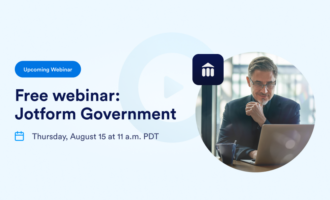




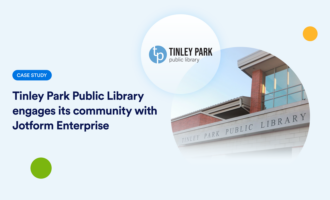


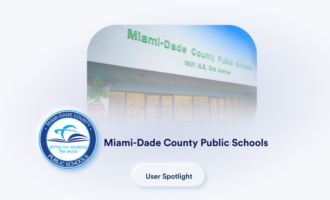



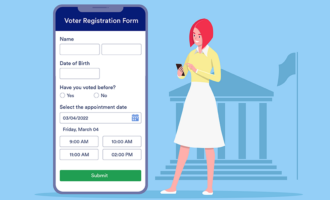






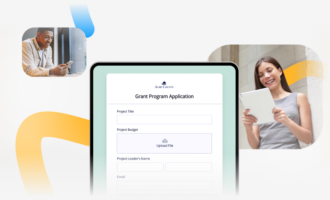
Send Comment: